Participants will develop a deep understanding of how five research-based strategies (ask yourself questions, sentence frames and starters, annotation, the Four R’s, and turn-and-talks) can be used to help students with learning disabilities develop mathematical thinking. They will learn about six accessibility areas (conceptual processing, visual-spatial processing, language, attention, organization, and memory) math learners must use when doing mathematics. They will see how the essential strategies support students as they work in each of the accessibility areas by engaging in an instructional routine designed to develop mathematical thinking. Participants coalesce their learnings as they apply the course ideas to draft IEP goals that focus on students’ mathematical thinking.
Asynchronous from
Oct 6 - Nov 30, 2021
2 recorded synchronous sessions, Oct 27th and Nov 9th 7-8 pm Eastern
More Information

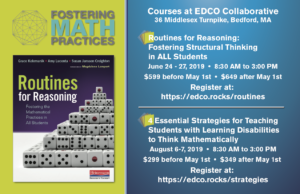
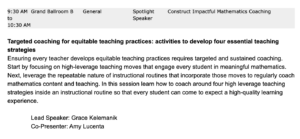
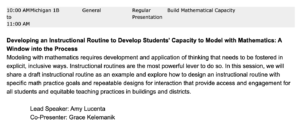
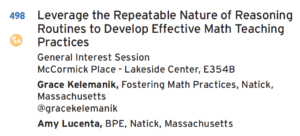
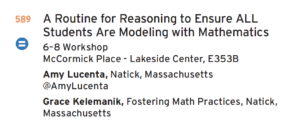
Comments are closed.
This task was great!! The students LOVED working through the logic in this problem. It sparked great conversations when the students used the sentence frames, ” I saw…so I connected…”. The sentence frames are a great stepping stone for my small groups of students. It helps frame their thinking and gives them a path way into noticing relationships within the problem. I noticed that the “60 more than twice as many votes” were providing a road block for some of the students in my small group. This is where the sentence frames helped. In short, the capturing quantities routine has been a great tool for these students to have in their math tool box. They have the logic of the 3 reads under their belt, and now they have the concept that they should be finding relationships among quantities in problems to further their thinking.